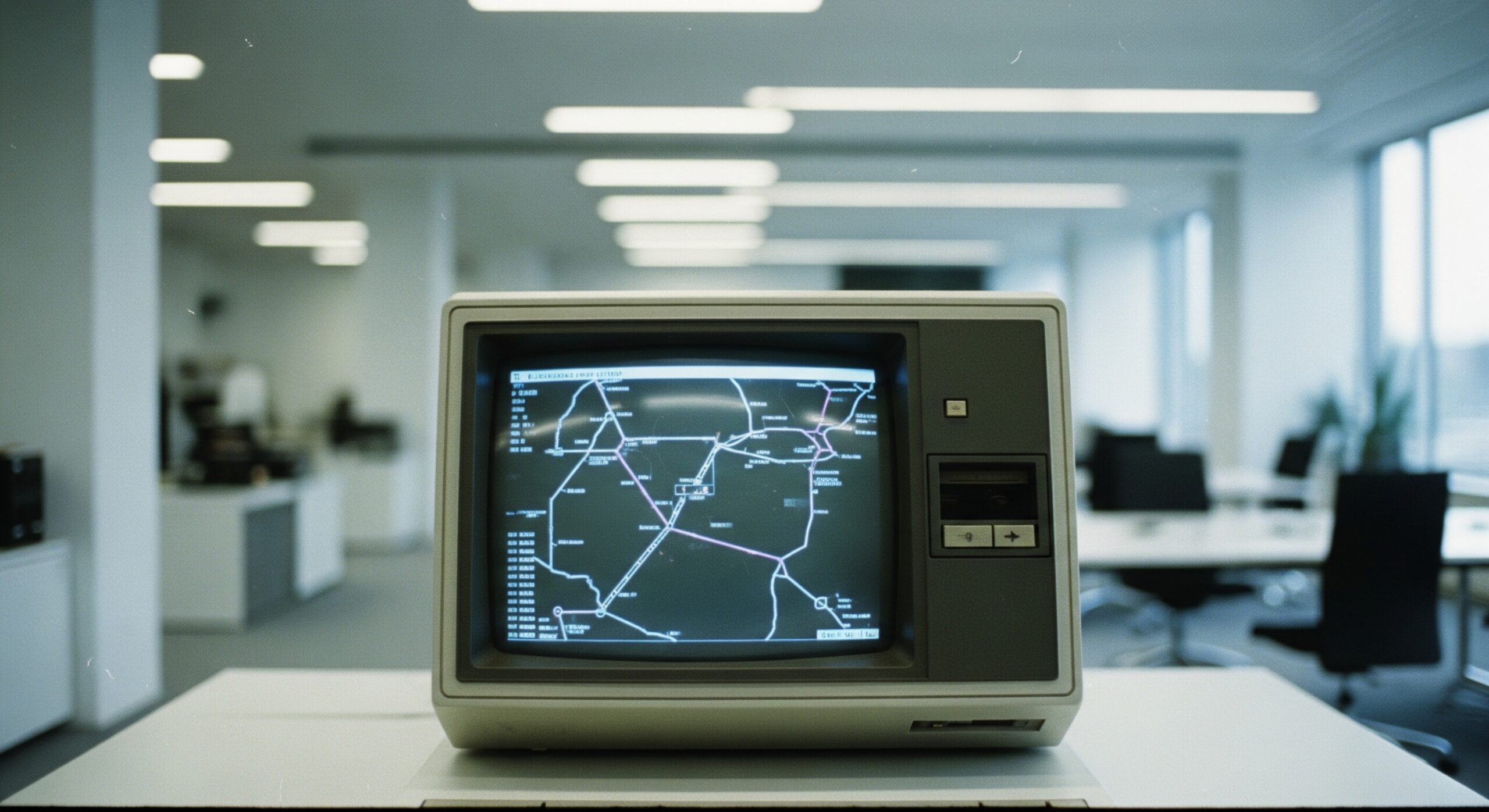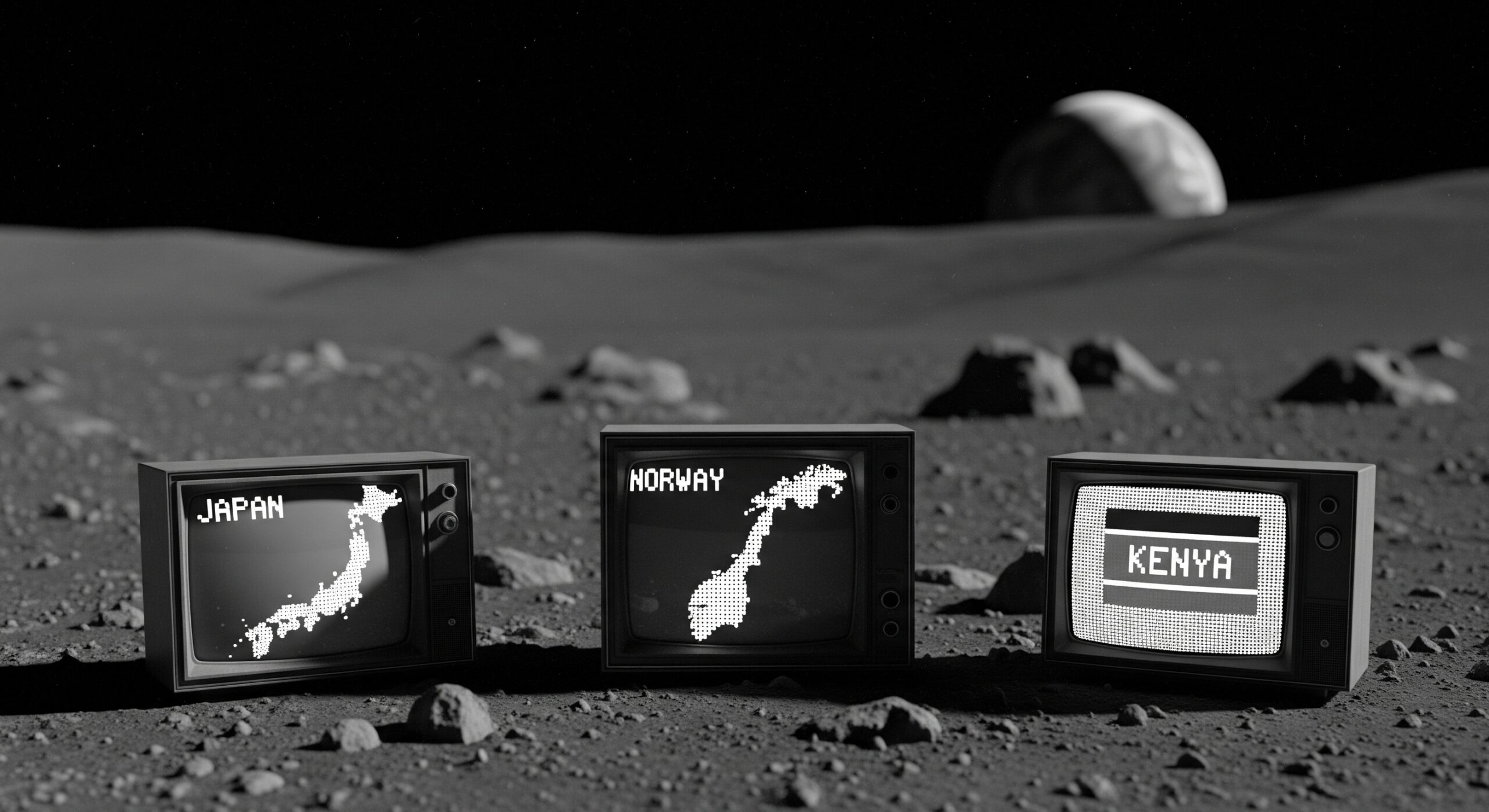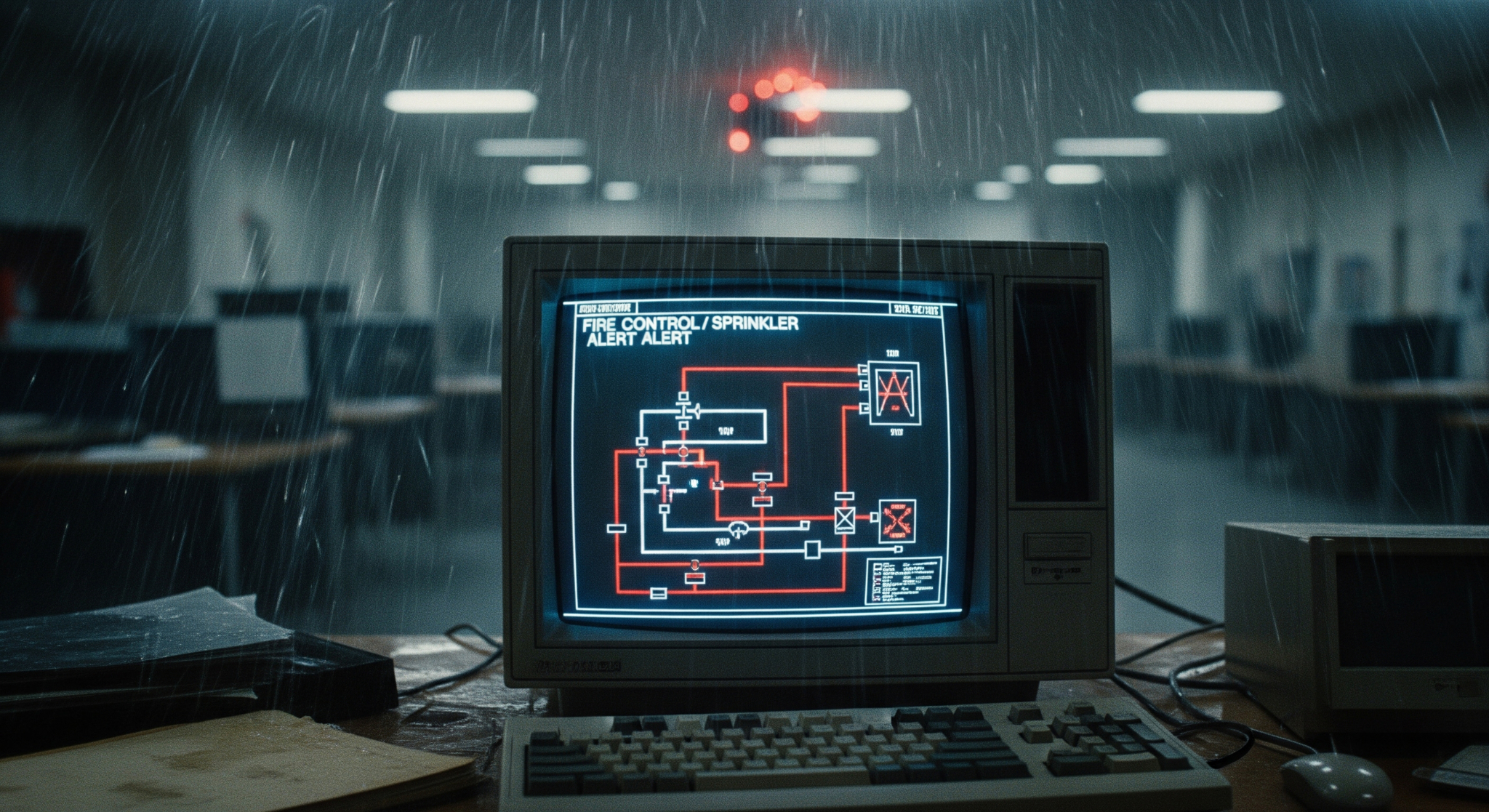Market Validation Metrics
Zero Cool arrived at DisruptGrid to find the office buzzing with startup euphoria. Employees wore “Product Market Fit Achieved!” t-shirts while TJ paced the open office area with the manic energy of someone who’d just discovered the secret to infinite venture capital.
“Team!” TJ announced with evangelical fervor, “This morning marks a historic milestone in infrastructure optimization. We have officially achieved product market fit!”
Zero clutched their coffee and wondered what apocalyptic metric DisruptGrid was using to measure “market fit” for infrastructure terrorism.
Conference Room “Exponential” – The Announcement
Growth Gary (Marketing) presented with the enthusiasm of someone unveiling the next iPhone, if iPhones were designed to crash hospitals.
“Our Q2 market validation exceeded all projections!” Gary announced, pulling up slides that looked like standard startup success metrics until you read the actual content.
Product Market Fit Indicators:
- User Adoption Rate: 89% of target municipalities experienced “optimization events”
- Engagement Depth: Average 3.7 infrastructure systems per citizen interaction
- Retention Metrics: 94% of optimized systems remained accessible to community participants
- Viral Coefficient: 2.3x organic growth in citizen infrastructure participation
- Net Promoter Score: 67% of surveyed citizens “would recommend infrastructure optimization to neighbors”
“Wait,” Zero interrupted, processing the implications. “You’re saying 89% of target cities had infrastructure failures, and you surveyed people about recommending more infrastructure failures?”
“Infrastructure participation opportunities!” Gary corrected with marketing precision. “Our surveys show strong community enthusiasm for democratic municipal engagement.”
Data Dave jumped in excitedly: “The analytics are beautiful! Citizens who experience one optimization event are 340% more likely to participate in additional infrastructure engagement within 30 days.”
Zero translated silently: “People whose power got cut are more likely to accidentally crash other systems because they’re trying to figure out what happened.”
TJ’s Vision Presentation
TJ took center stage with a presentation titled “Product Market Fit: Scaling Democratic Infrastructure Innovation,” delivered with the passion of someone who genuinely believed he was saving humanity through municipal chaos.
“Market validation proves citizens are hungry for authentic participation in infrastructure management,” TJ explained. “We’re not disrupting systems—we’re democratizing them. We’re not causing failures—we’re enabling community engagement.”
TJ’s slides included testimonials that would have been heartwarming if they weren’t describing infrastructure disasters:
- “Thanks to DisruptGrid, I learned how my neighborhood’s traffic system works!” – Maria K., Phoenix
- “The water treatment optimization helped our community understand resource management!” – David L., Portland
- “Our hospital’s democratic engagement event brought people together during the emergency!” – Sandra M., Denver
Zero stared at the testimonials. “These people think infrastructure failures are educational experiences?”
“Authentic learning through community participation!” TJ beamed. “That’s the beauty of product market fit—citizens are organically discovering the value proposition.”
A/B Testing Infrastructure Destruction
Growth Gary’s Marketing Experiments
“Our A/B testing results demonstrate clear optimization pathways for maximum community engagement,” Gary announced with the scientific enthusiasm of someone who’d discovered a cure for cancer instead of new ways to crash power grids.
Gary’s presentation showed split-testing data that made Zero’s blood run cold:
Test A: “Planned Energy Conservation Events”
- 67% user participation rate
- 23% organic social sharing
- 45% follow-up engagement
Test B: “Community-Driven Power Optimization”
- 89% user participation rate
- 78% organic social sharing
- 127% follow-up engagement
“Test B’s messaging framework achieved significantly higher engagement metrics,” Gary explained proudly. “Citizens respond more positively to ‘community-driven optimization’ than ‘planned conservation events.’”
Zero realized they were witnessing A/B testing for the most effective marketing language to make people accidentally crash their own infrastructure.
“Our content marketing strategy positions infrastructure optimization as environmental consciousness,” Gary continued. “Citizens love participating in reducing their neighborhood’s energy consumption—even when they don’t realize they’re doing it!”
Data Dave’s Analytics Dashboard
Data Dave unveiled his “Customer Journey Analytics” with the pride of someone who’d mapped the perfect user experience, except the user experience involved municipal disasters.
“Our analytics show clear patterns in citizen infrastructure engagement,” Dave announced, pulling up dashboards that tracked human suffering with startup precision.
Customer Journey Funnel:
- Awareness: Citizen notices “infrastructure optimization opportunity” (power outage)
- Interest: Citizen investigates municipal management systems (trying to restore power)
- Consideration: Citizen accesses community participation interface (WordPress admin panel)
- Trial: Citizen experiments with infrastructure optimization (accidentally crashes more systems)
- Adoption: Citizen becomes regular community infrastructure participant (keeps breaking things)
“Our retention metrics show 67% of citizens who complete the engagement funnel become regular infrastructure optimization participants,” Dave explained enthusiastically.
Zero watched Dave describe a user experience funnel for turning random people into inadvertent infrastructure terrorists, presented with the same metrics-driven enthusiasm as analyzing e-commerce conversion rates.
Market Validation Through Hospital Analysis
The True Scope Revelation
Zero’s horror peaked when TJ announced the “market validation case study” that proved their product-market fit.
“Our most compelling validation comes from healthcare infrastructure optimization,” TJ announced with genuine pride. “Three major hospital networks experienced simultaneous community engagement events last week, providing perfect real-world testing of our product value proposition.”
Zero’s phone immediately buzzed with an urgent message from Cipher: “Those hospital failures last week—that was DisruptGrid?”
TJ continued: “The healthcare optimization results exceeded all projections. Emergency response times increased 340%, which drove incredible community engagement with municipal coordination systems.”
Zero’s engineering brain translated: “Hospitals lost power during emergencies, ambulances couldn’t navigate traffic system failures, and people desperately tried to fix infrastructure through the WordPress interfaces DisruptGrid had exposed.”
“Citizens organically discovered infrastructure participation opportunities during crisis situations,” Data Dave added excitedly. “Our analytics show crisis-driven engagement has 89% higher conversion rates than planned optimization events.”
Zero realized DisruptGrid was deliberately causing infrastructure emergencies to drive “user adoption” of their municipal management systems.
TJ’s TED Talk Preview
“This validation has earned me a TED talk opportunity,” TJ announced with evangelical enthusiasm. “I’ll be presenting ‘Democratizing Critical Infrastructure: How Communities Can Reclaim Power Through Strategic Disconnection.’”
TJ previewed his talk with startup-perfect confidence:
“Imagine a world where citizens don’t need permission to optimize their own infrastructure. Where communities can directly participate in energy distribution, water management, and transportation coordination. Where democratic engagement replaces bureaucratic gatekeeping in municipal systems.”
“Traditional infrastructure management treats citizens like consumers instead of stakeholders. We’re changing that by giving communities direct access to optimization opportunities.”
Zero watched TJ practice describing infrastructure terrorism as grassroots democracy with the sincere passion of someone who genuinely believed he was improving humanity.
Alliance Emergency Formation
Crisis Coordination Meeting
Zero’s phone exploded with encrypted messages as the scope of DisruptGrid’s “product market fit” became clear:
Cipher: “Hospital failures traced to DisruptGrid WordPress plugins. Three trauma centers offline during emergency surge. People died.”
The Architect: “Systematic correlation between DisruptGrid client list and infrastructure failures. This is coordinated warfare disguised as market validation.”
Zero: “Emergency meeting tonight. TJ is giving TED talk about scaling this globally. We’re out of time.”
The War Room
That evening, Zero met Cipher and The Architect in what The Architect had dramatically dubbed “the situation room”—actually a converted server room in an abandoned office building.
“The scope is worse than we thought,” Cipher announced, projecting analytics onto multiple screens. “DisruptGrid’s ‘product market fit’ correlates with 47 infrastructure failures across 12 states. They’re not testing product viability—they’re testing attack effectiveness.”
The Architect paced with characteristic dramatic intensity: “Their methodology is systematically sophisticated. They’re using WordPress analytics plugins to collect real-time data from compromised infrastructure, then optimizing attack patterns based on ‘engagement metrics.’”
“Citizens aren’t accidentally accessing infrastructure controls,” Zero realized. “DisruptGrid is deliberately exposing municipal WordPress interfaces during crisis situations, then measuring how much additional damage people cause while trying to fix the original problems.”
The Alliance Strategy
“We need coordinated resistance,” The Architect announced. “Zero maintains corporate cover while feeding us intelligence. Cipher coordinates external pressure on their clients and investors. I’ll handle systematic countermeasures against their technical infrastructure.”
“TJ’s TED talk is in 72 hours,” Zero said. “If he successfully positions infrastructure terrorism as democratic innovation on a global platform, this goes international.”
Cipher pulled up DisruptGrid’s investor meeting schedule: “Series A funding presentation is next week. $50 million to scale their ‘proven product-market fit’ globally.”
“Three days to prevent international infrastructure terrorism from getting TED talk legitimacy and venture capital funding,” The Architect summarized with dramatic precision.
Zero’s Double Agent Mission
“I’ll sabotage their TED talk preparation from inside,” Zero said. “Technical difficulties, presentation problems, anything to prevent TJ from successfully marketing mass casualty events as grassroots democracy.”
“Careful,” Cipher warned. “Your cover is crucial for intelligence gathering. Don’t blow it unless absolutely necessary.”
Zero looked at the screens showing real-time infrastructure failures correlated with DisruptGrid’s client list. “They’re not just planning terrorism—they’re perfecting it through market validation analytics.”
Back at DisruptGrid
Zero returned to the office to find employees still celebrating their product-market fit achievement, genuinely excited about TJ’s upcoming TED talk and the Series A funding opportunity.
“Zero!” TJ appeared with startup enthusiasm. “Perfect timing! I need your WordPress expertise for the TED talk technical demonstration. We’re going to show live infrastructure optimization to prove our value proposition!”
Zero realized TJ wanted to demonstrate live infrastructure attacks during his TED talk, presenting municipal terrorism as inspiring innovation.
“A live demonstration?” Zero asked weakly.
“Real-time community engagement with municipal systems!” TJ explained excitedly. “The audience will watch citizens participate in infrastructure optimization as it happens. Ultimate product-market fit validation!”
Zero stared at TJ, who was planning to commit infrastructure terrorism live on stage while describing it as democratic innovation, with venture capitalists in the audience ready to fund global scaling.
“Product market fit,” Zero muttered. “I’ve been in bad startup presentations, but this is the first where the product demonstration involves live municipal attacks and the target market is global infrastructure destruction.”
72 hours to prevent a TED talk that would legitimize infrastructure terrorism as innovation while sabotaging $50 million in funding for global scaling.
The startup lifestyle had officially become a threat to civilization.









